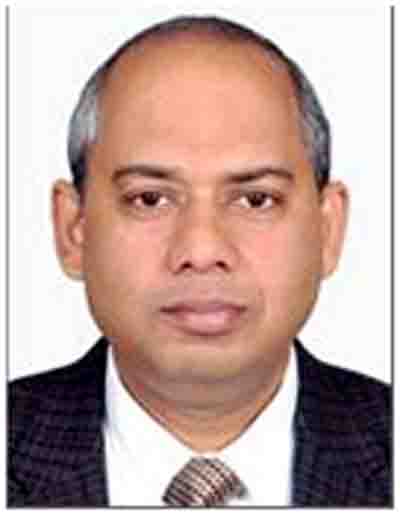Fear of failure turning fatal

Monday, 19 February 2024 | in Guest Column
GUEST COLUMN
 Onkar Singh
Onkar Singh
It is quite perplexing to read frequent news of young students ending their lives. According to the statistics of the National Crime Records Bureau (NCRB), more than one lakh people have committed suicide every year for the last many years. The recorded numbers are on constant rise as evidenced by these being 1,70,924 in 2022 as compared to 1,64,033 in 2021, 1,53,052 in 2020, 1,39,123 in 2019 and 1,34,516 in 2018. Looking at the documented reasons, amongst these 1.9 per cent are caused due to unemployment, 1.2 per cent due to failure in examination, 1.2 per cent due to professional/career problems and 6.8 per cent due to drug abuse/alcohol addiction. In the year 2022, 4,616 males and 5,588 females of age up to 18 years committed suicide while similar numbers for the age group of above 18 and less than 30 years were 38,259 males and 20,828 females committing suicide. State-wise share in total suicides in 2022 shows Maharashtra to have highest suicides with 13.3 per cent followed by Tamil Nadu at 11.6 per cent, nine per cent in Madhya Pradesh, eight per cent in Karnataka, 7.4 per cent in West Bengal, 5.9 per cent in Kerala, 5.8 per cent in Telangana, 5.3 per cent in Gujarat, 5.2 per cent in Andhra Pradesh, 4.9 per cent in Chhattisgarh and 4.8 per cent in Uttar Pradesh. Attempting to link these mishaps with literacy shows that State-wise literacy rates are not following this pattern, meaning thereby that the suicides have nothing to do with literacy.
Although every suicide is worrisome and should be checked, the tendency of the very young population to end life due to failure in examination or fear of failure in examination, or some other reason is disquieting because of their less exposure to life. It’s a most unfortunate situation and calls for contemplation to make necessary corrections. Why does it happen? Who is pushing students or how are they pushed to such a scary mental state of failure? Can’t it be checked? These are some of the key issues seeking immediate interventions. Undoubtedly, the reasons could vary from individual to individual, but the introspection and news reports indicate that a few generic factors responsible for it could be one or more of the following.
Academic performance pressure:
In the current scenario, the students of secondary education are consistently subjected to intense academic performance pressure to excel well in engineering, medicine, law or other examinations. There is a fear of the likelihood of failing to perform as per the expectation of the students themselves and/or the parents or their peers. Ostensibly, the education system nurturing students for regular and competitive examinations is unable to empower them to deliver the expected performance. Eventually, students resort to external assistance of outside coaching/tuition which eats away a lot of their time and energy. As a result, the students are amply stressed because of two parallel educations at school and in coaching classes. During this course, any lapse or likely lapse worsens their state of mind. Further, the high expectations without capability assessment always inculcate severe pressure in the minds of the performers. The education providers must hold detailed counselling sessions to help children choose appropriate goals as per their latent abilities and interests. The schools ought to handhold students after examining why they are not adequately equipped to perform well to fulfil their aspirations. In most cases, it boils down to the teaching-learning activities in the classrooms and laboratories being of deficient quality. School teachers must collectively strategize and act upon worthy quality enhancement in teaching-learning processes in classrooms. Teachers should make students ready to cope in case of their lagging and germinate the respect for merit. If the students are adequately taught, the requirement of coaching will not be there, and the confidence level of students will be boosted leaving no room for anxiety. This lessens the chances of mental health issues. Kudos to the government for prohibiting enrolment of children below 16 years of age, but this will fructify well only with simultaneous enhancement in the quality of education in the formal education system that makes coaching requirements redundant.
Social factors:
The behaviour of students, teachers, parents and other people in society with the student hurts the sentiments that lead to pessimism. Social exclusion, isolation, hopelessness, etc can also contribute to the loss of confidence in individuals prone to suicidal tendencies. The expectations of parents and relatives from the student and the fear of not being able to achieve them generate unwanted pressure and frustration. Sometimes, stigmatization, family conflicts, lack of support, behavioural problems, family trauma, breakups, conflicts and emotional distress too play a role in the undue stress of children. The urban and rural disparities in suicide mortality are also visible with more suicides in rural as compared to urban areas. Suicide by men is also seen to be more prevalent than by women in urban or rural areas. Nevertheless, the measures for suicide prevention in rural and urban settings are largely the same but specific efforts are required for rural areas due to these being different from urban areas in respect to openings for young students. Society in general should perceive the likely threat of young children getting into a state of distress which stretches to the breaking point. Every individual must appreciate the relevance of maintaining a happy, healthy and positive tone of interactions for strong and capable future generations. Being appreciative of others always strengthens the social fabric.
Financial issues:
Besides the reasons cited above, the financial constraints restricting any individual from marching ahead create a sense of deprivation. It is owed to the parents and family conditions. Any young individual is destined to be affected because of the poor financial conditions of their respective family. Financial constraints yield frustration and helplessness. Though the financial aspects are temporary and can be overcome, the mechanism for circumventing them is usually not easy and students droop down to the lowest esteem and become psychologically weak. Despite arrangements for seeking financial support in the form of scholarships, donations, etc, the inability to reach out to the deprived ones affects access. Easing out financing may prevent a lot of hardships for the economically disadvantaged section of society.
Way forward:
Considering the vulnerability of the young population to suicide, educators must impart wholesome education with liberal access to students and healthy student-teacher interactions. Efforts must be made so that the students do not feel the pinch of being non-performers and do not burden themselves with additional coaching. Over and above, the parents must also spare ample time for children to inculcate good values in them, de-stress them, alleviate them from performance pressure, keep their esteem elevated, and energize them to do their best without bothering for results. Stringent regulation of education processes and institutions to offer good quality education to children holds the key to liberating them from performance anxieties. Children need to be trained not to run away, instead convinced that human civilization has enough opportunities for everyone and the inability to get one never closes all the doors, rather it opens new vistas with a plethora of opportunities.
(The author is the vice chancellor of Veer Madho Singh Bhandari Uttarakhand Technical University. Views expressed are personal)






